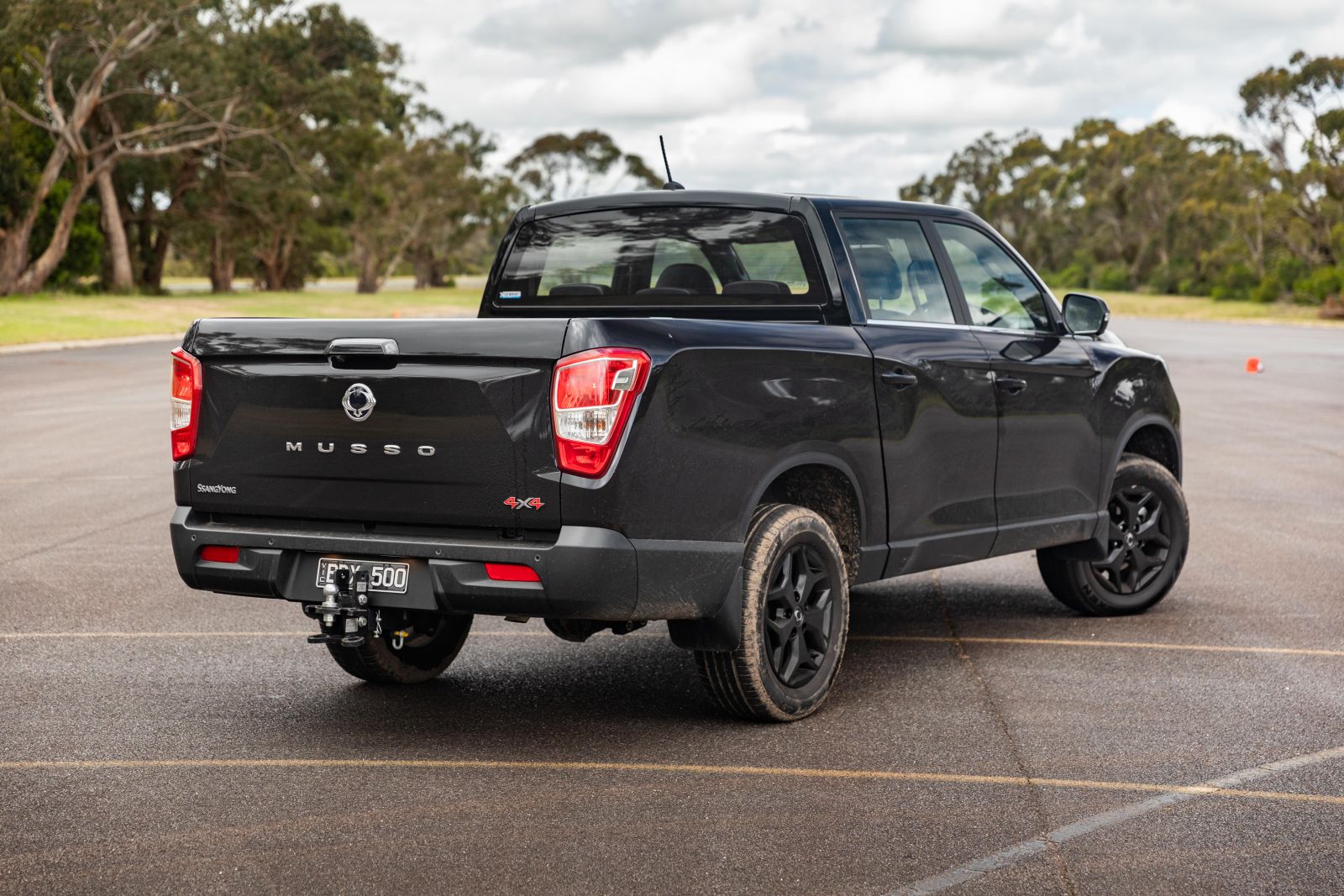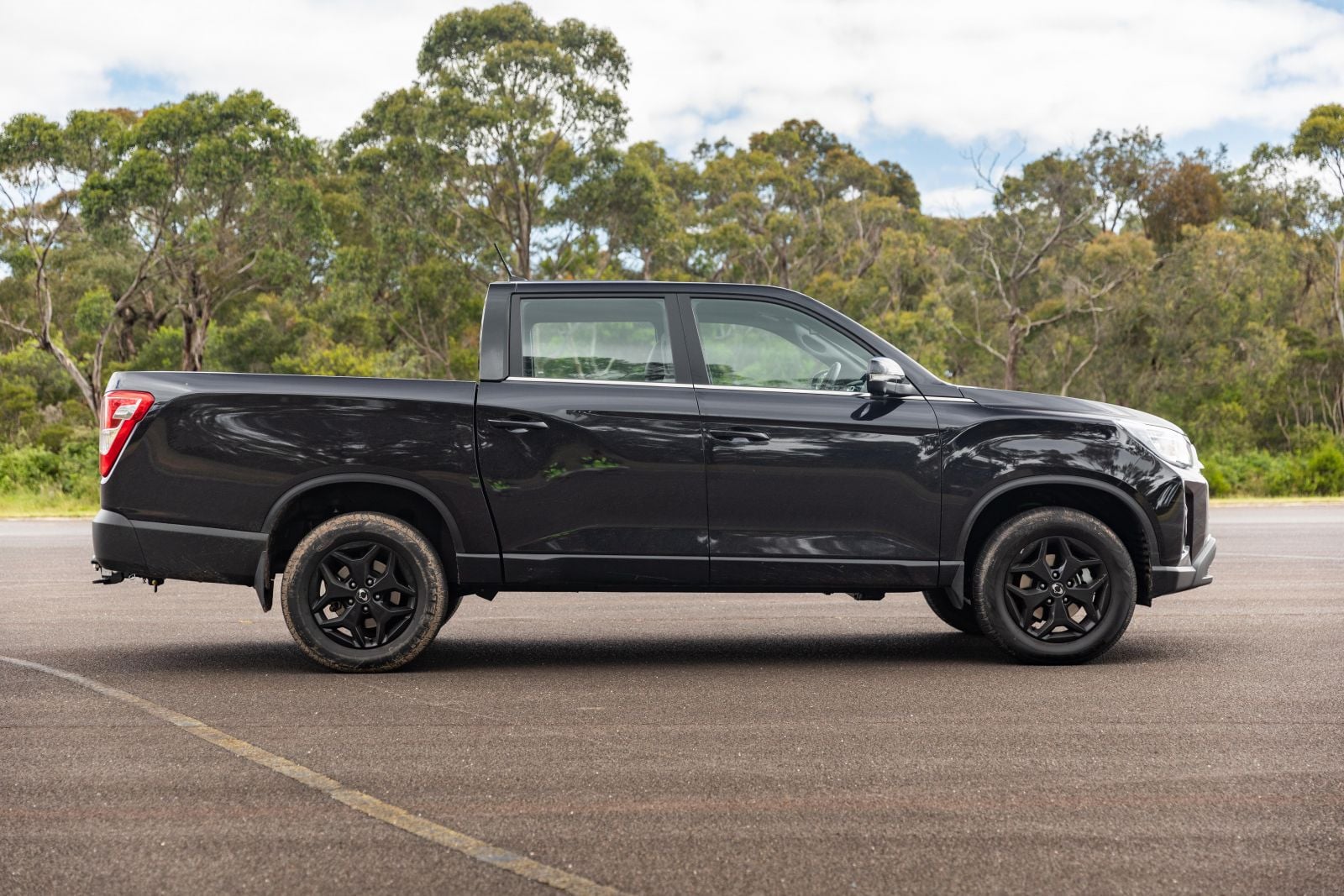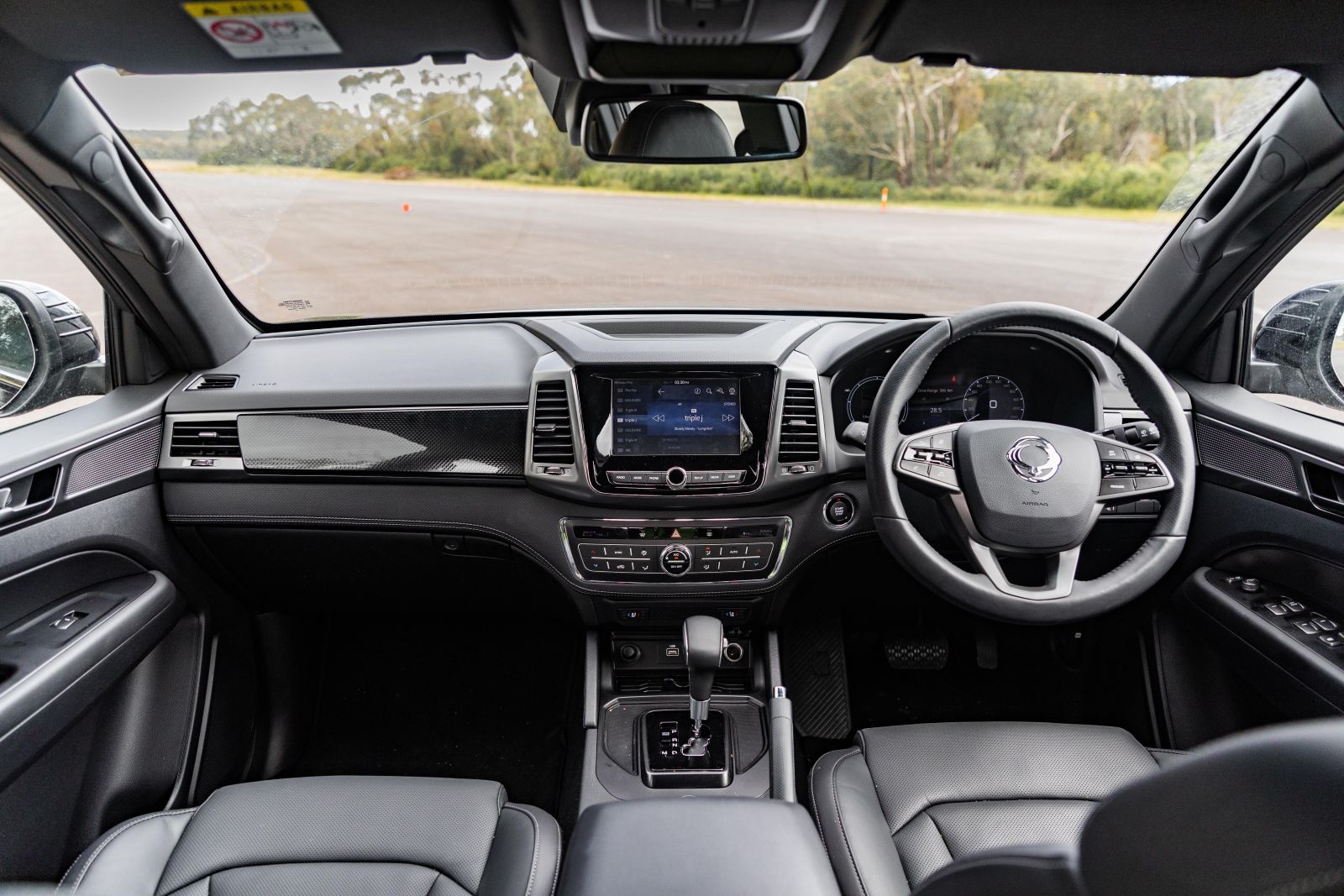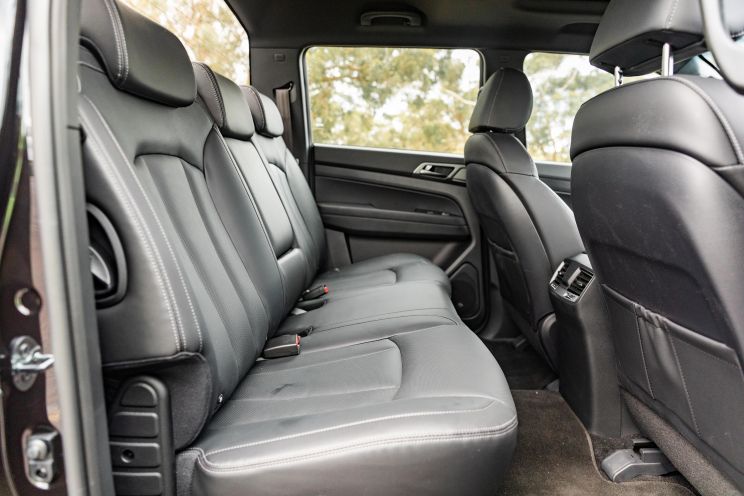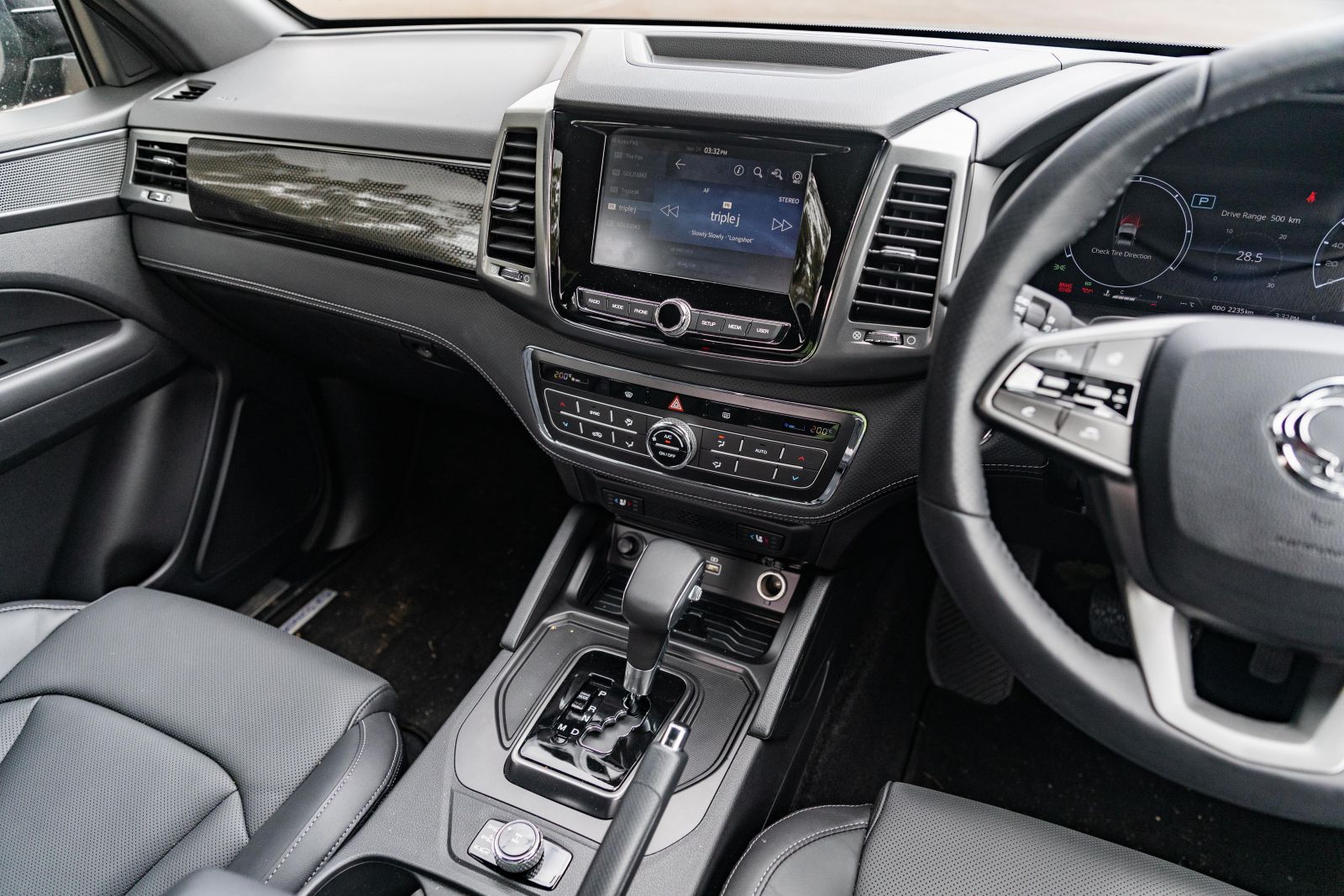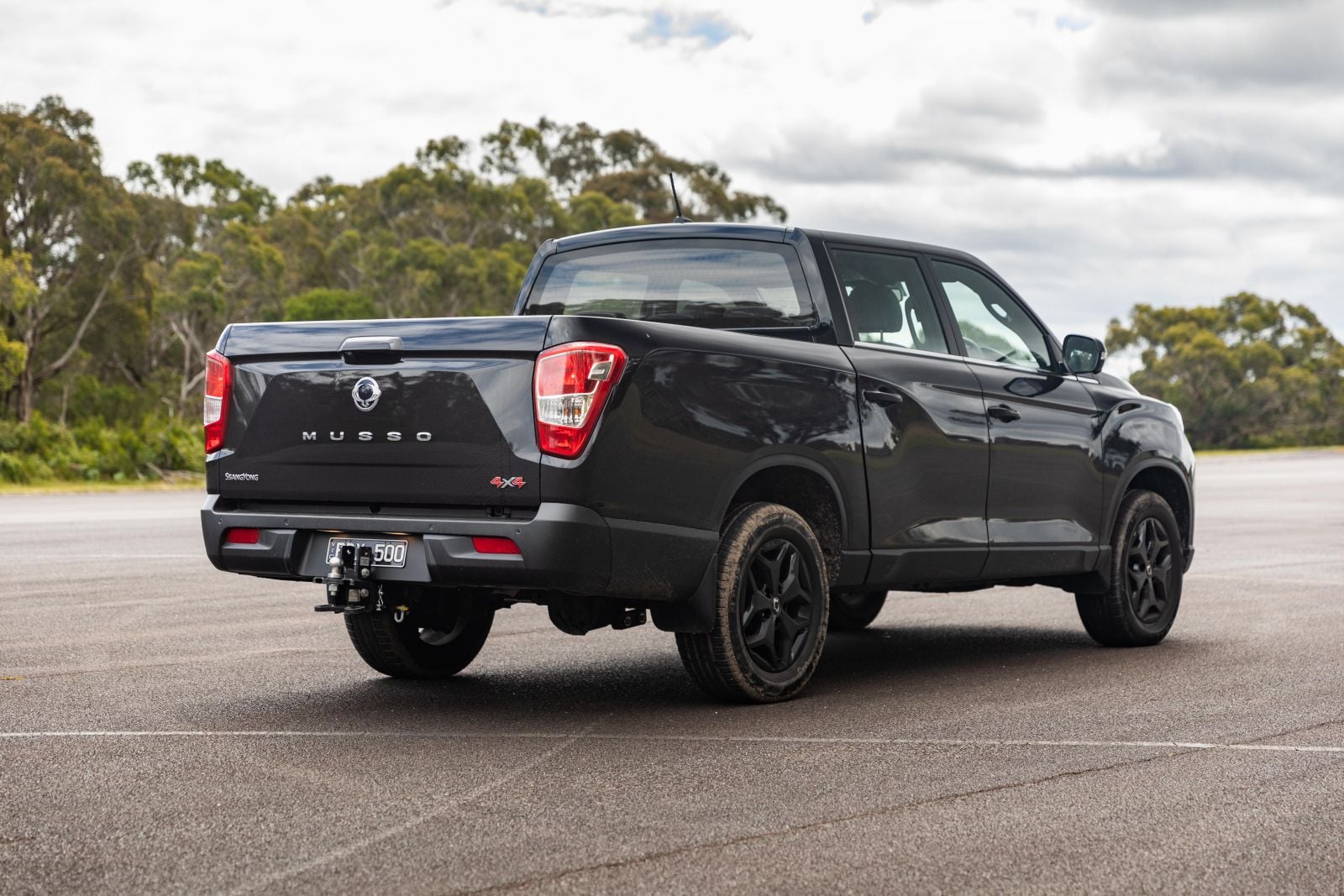SsangYong is enjoying a new lease on life, and the Musso stands to benefit.
The Korean automaker finally appears to have a stable new owner after a lengthy period of receivership and an initial bidder that couldn’t pay up. It achieved a record year for sales in 2022, though its three model lines sit well below most rivals on the charts.
We’ve said before that the SsangYong Musso and the related Rexton SUV deserve to sell better, particularly considering how sharply they’re priced.
Despite SsangYong having been in the Australian market for longer, rival utes from Chinese brands GWM and LDV have overtaken the Musso on the sales charts. It makes sense, then, that SsangYong’s new leadership is looking to rename the brand and try to shed its “painful image”.
But it will take more than a new badge on the grille to get SsangYong on buyers’ radar, considering many punters either don’t know the brand exists or think it’s Chinese – not that the latter is as much of an impediment in 2023, seeing how GWM sales continue to soar.
SsangYong has around 50 dealerships nationwide, while Toyota has more than five times as many. You’ll be fine if you live in a major metropolitan area and in certain regional centres but, notably, SsangYong has only three dealers in South Australia and nothing north of Perth in our westernmost state.
The Musso received a polarising facelift in 2021 and a slate of further revisions in 2022, but the Australian-market model didn’t receive the full gamut of updates.
Notably, Korean-market models get a more powerful turbo-diesel engine and an electric power steering set-up that brings with it adaptive cruise control, lane-keep assist and active lane centring.
In terms of safety equipment, the Australian-market Musso XLV still stacks up adequately in the ute segment, but manufacturers have been quickly expanding their utes’ lists of standard safety kit and SsangYong risks being left behind.
The Musso stands out in this segment for its slightly unorthodox styling, though it doesn’t have the polarising lines of the brand’s past ute models like the Musso Sports and Actyon Sports.
The way the door comes in under the C-pillar makes it look like an SUV with the rear lopped off, sending strong Honda Ridgeline vibes. And yet, SsangYong has given the Musso a decidedly more brash front end than the related and more elegant Rexton, though there’s still attractive metal trim on the grille.
Headlights are increasingly uncommon HID units – better than halogen lights, but not as effective as LEDs.
The XLV has an extended wheelbase measuring 3210mm long, up 110mm on the standard Musso. It also has a longer tub, so all up the Musso XLV measures 5409mm long, or 314mm longer than the standard Musso. The stretch gives the XLV slightly more ungainly proportions than the regular Musso, but that’s the price to pay for a more voluminous tub.
How much does the Ssangyong Musso XLV Ultimate cost?
The SsangYong Musso range opens at $36,790 drive-away in ELX trim, with the Ultimate starting at $43,090 drive-away.
The extended-length XLV body comes in what SsangYong calls the XLV Pack, adding $1500. Our tester also included the $3000 Luxury Pack, $595 metallic paint, $1790 tow bar and $620 electronic brake controller.
Rounding out the list of options was our tester’s $730 Constant Load Coil Spring Kit, which includes front and rear coil springs, and a spring rate upgrade of 50-100kg up front and 200-400kg at the rear. There’s also a performance coil spring kit available, as well as a more comprehensive Constant Load kit that includes nitro gas shock absorbers.
Our Musso XLV was well kitted out, but there’s plenty more you can add. The list of accessories you can order through SsangYong is long, and includes three different types of side steps, as well as a bevy of sports bars, tub accessories and the like.
All up, our tester had a drive-away price of $51,325.
Key rivals for the SsangYong Musso XLV Ultimate are the GWM Ute and the LDV T60. The former can be had in top Cannon-X trim at $45,490 drive-away (a pricier Vanta black-pack model is also available), while the latter will once again be available in extended Mega Tub guise early this year, priced at $49,463 drive-away for private buyers.
All three of these utes feature sharper pricing than the likes of the Toyota HiLux and Ford Ranger, though the stalwart Mitsubishi Triton also targets price-conscious buyers.
The Triton GLX+ is priced at $47,190 before on-road costs, though the Japanese brand is currently offering drive-away pricing in New South Wales of $50,740. This is only the second from base grade, however, so while it undercuts the HiLux and Ranger it can’t match the SsangYong on kit.
What is the Ssangyong Musso XLV Ultimate like on the inside?
As part of a 2022 update, the Musso gained a 12.3-inch digital instrument cluster, as well as a new overhead console with LED map lights and seat belt reminders.
The digital instrument cluster is attractive with multiple different views, but I tended to leave it on a conventional gauge display and not the angular, vaguely BMW-like view. Interestingly, as you get closer to a speed, that number gets larger.
Less impressive is the infotainment system. The interface is relatively attractive if somewhat dated, but response times aren’t the snappiest, there’s no home button, and the screen gets washed out in sunlight no matter how much you fiddle with the display settings.
The interior overall has quite an upscale ambience for a ute, with soft-touch perforated leather-look trim across the front of the dashboard and soft-touch plastic across much of the dash top.
Silver-finish speaker grilles and black patterned dash trim also provide some welcome contrast; there’s some gloss black trim, but it’s used relatively sparingly.
There’s also but one button blank, while the headliner is nicer than the mouse-fur rubbish found in most utes.
All that’s missing for the ambience is some leatherette trim on the sides of the centre console (like in the Triton) and the quilted leatherette door cards of the GWM Ute; only the arm rests on the Musso’s doors are soft.
The number of luxury features is surprising for this segment. There’s a single-pane sunroof, a rarity for a ute this size, though its operation is clunky – pressing the open button doesn’t open the shade as well, and to do so you need to both push and pull a handle.
Seats are heated and ventilated up front; to get ventilated seats in any other ute in Australia, you’d need to pony up for something like a Ram 1500 Limited. There’s also a heated steering wheel which helpfully remembers what setting you had it on when you restart the vehicle, and a simple nicety: illuminated vanity mirrors.
Some touches belie the Musso’s age, at least compared to the likes of the Ford Ranger. There’s no electronic parking brake, while the shifter is of the gated variety, and the manual mode is located on the left-hand side.
The bottle holders in the doors can fit larger water bottles, the centre console bin is fairly deep, and there’s an insert atop the centre stack with a rubberised base.
At the base of the centre stack, where you’ll find two USB-A outlets, there’s a rubberised insert you can pull out. This little niche isn’t quite large enough for most modern smartphones, and there’s no wireless charger.
Step into the rear and you’ll find air vents and heated outboard seats, though there are no USB or power outlets. Map pockets can be found on the front seatbacks.
The rear of the cabin isn’t overly spacious by class standards, with rather average knee room. But the floor is relatively flat, and there’s plenty of headroom; at 180cm, I was able to sit in the slightly higher, firmer centre seat without my head touching the roof.
Along with storage space beneath the bench, there are top tethers on the back of all three seats, and ISOFIX on the outboard seats.
Astonishingly, SsangYong persists with a centre lap belt in the Musso in 2022 – a black mark in terms of safety.
Around back, the tub has two tie-down points on each of the sides and two at the rear of the cab.
It measures 300mm longer than the standard-length Musso at 1600mm, with a width of 1570mm (1100mm between the arches) and a depth of 570mm.
What’s under the bonnet?
The Musso continues to be powered in Australia by a 2.2-litre four-cylinder turbo-diesel producing 133kW of power at 4000rpm and 420Nm of torque between 1600 and 2600rpm.
It’s mated with a six-speed automatic transmission and selectable four-wheel drive with low-range gearing and a locking rear differential.
Korean-market models, in contrast, get a 2.2-litre with 148kW and 441Nm.
SsangYong says the Australian-spec engine meets Euro 6 emissions standards and doesn’t require Diesel Exhaust Fluid (DEF), which would have necessitated an additional tank that would have prevented the company from installing a full-sized spare wheel.
The Musso XLV Ultimate has a payload of 880kg, a gross vehicle mass (GVM) of 2980kg, and a gross combined mass (GCM) of 6480kg.
Braked towing capacity is a class-competitive 3500kg, in line with the likes of the Ranger and HiLux and better than the LDV T60 and GWM Ute (3000kg) and Triton (3000-3100kg).
While the Musso is down on power and torque against the T60 (160kW/500Nm), it’s essentially line-ball with the Triton (133kW/430Nm) and bests the GWM Ute (120kW/400Nm).
On a loop consisting of inner-city, suburban and highway driving, we averaged 8.7L/100km – actually slightly better than the official combined cycle claim of 9.0L/100km.
How does the Ssangyong Musso XLV Ultimate drive?
The Musso may be derived from an SUV, but it sure doesn’t ride like one.
It feels softly sprung up front, but impacts from expansion joints and the like reverberate through the structure when driving unladen.
It jiggles a bit at the rear, even over relatively well-surfaced roads, and bounces around on rural roads. Body control on undulating roads is mediocre, and there’s some kickback through the steering.
It’s clear, then, the Musso XLV is best driven with a load in the back. But while it can’t offer Ranger levels of ride quality, or the unmatched comfort of a Mazda BT-50 with its suspension upgrade, it’s scarcely worse than a Triton.
In some ways, the Musso XLV is better than a Triton. Case in point: the steering. It feels nice and fluid, and consistently weighted. It’s lighter than a Triton’s tiller without being quite as light as a BT-50, and therefore strikes a nice balance.
Noise levels are quite low, with only a bit of wind rustle at highway speeds. Fortunately it’s not too loud, as the rather pedestrian sound system isn’t great at drowning out noise.
The typical diesel four soundtrack is quite subdued, though the engine makes the odd croaky, spluttery noise. None of this proves too intrusive.
Mid-range grunt isn’t exceptional, but the Musso has plenty of torque available nice and low in the rev range that makes it feel pretty zippy around town. There’s a sufficient amount of performance on tap, though more would be welcome.
The Musso offers a choice of Eco, Power and Winter drive modes, and you can manually shift gears by pushing the shifter to the left.
Active safety and driver assist technology has been proliferating throughout the ute segment, but the Musso still lacks both adaptive cruise control and lane-keep assist – though these are available in the SsangYong overseas.
There’s lane departure warning and standard cruise control, albeit with no separate speed limiter function, and bizarrely holding the cruise control button only adjusts it by 2km/h (instead of 5 or 10km/h) increments.
The Musso XLV packs an auto-locking rear differential and selectable four-wheel drive. There’s no full-time four-wheel drive mode for on-road driving as you’ll find in up-spec Mitsubishi Tritons, among other utes.
What do you get?
Musso ELX highlights:
- 12.3-inch digital instrument cluster
- 8.0-inch touchscreen infotainment system
- Wired Apple CarPlay, Android Auto
- 6-speaker sound system
- Leather-wrapped steering wheel
- Illuminated vanity mirrors
- Overhead console with LED map lights
- Rear air vents
- Rear folding centre armrest
- Tilt steering wheel adjustment
- Keyless entry and start
- Lockable glovebox
- Cloth upholstery
- Manually adjustable front seats
- HID headlights
- Front fog lights
- LED daytime running lights
- Rain-sensing wipers
- Power-folding, heated exterior mirrors with puddle lights
Musso Ultimate adds:
- Heated steering wheel
- Telescopic steering wheel adjustment
- Stainless steel sill plates
- Tyre pressure monitoring
- Leather upholstery
- Heated and ventilated front seats
- 18-inch black-finish alloy wheels
Luxury Pack (Ultimate, $3000) adds:
- Dual-zone climate control
- Single-pane power sunroof
- Nappa leather upholstery
- Power front seats with powered driver’s lumbar
- Heated rear seats
Some of these features, like Nappa leather and ventilated front seats, are virtually unheard of in this segment.
Is the Ssangyong Musso XLV Ultimate safe?
The Musso is the only vehicle in its segment to lack an ANCAP rating, whether valid or expired, as it has not been tested by the safety authority (or Euro NCAP) in its current generation.
SsangYong Australia has previously said its vehicles “fully comply with, and in many areas, exceed ADR national safety standards” and that it “continues to work with ANCAP on future planning”. Nevertheless, the lack of a rating is disappointing.
Standard safety features include:
- 6 airbags
- Autonomous emergency braking
- Automatic high-beam
- Driver attention monitoring
- Hill descent control
- Hill Start Assist
- Lane departure warning
- Trailer sway control
- Front and rear parking sensors
Musso Ultimate adds:
- Blind-spot monitoring
- Rear cross-traffic alert
- Lane Change-collision Warning
- Surround-view cameras
The lack of lane-keep assist and adaptive cruise control is disappointing, but the Musso isn’t alone. The LDV T60 and Mitsubishi Triton also lack these in all grades.
How much does the Ssangyong Musso XLV Ultimate cost to run?
The SsangYong Musso XLV is backed by a seven-year, unlimited-kilometre warranty, much like the rival GWM Ute.
SsangYong also offers seven years of capped-price servicing, with intervals of 12 months or 15,000km. Each service is capped at $375.
The service offer is particularly impressive as while some rivals offer similarly priced services, few offer seven years’ worth.
CarExpert’s Take on the Ssangyong Musso XLV Ultimate
The Musso XLV makes a compelling case for itself at this more price-conscious end of the ute market.
Against an LDV T60 or GWM Ute, it has greater towing capacity and more creature comforts, though the GWM has more safety equipment and the LDV has more power and torque.
It’s unique in offering the option of a longer tub – the longest in the segment, in fact – though LDV will soon reintroduce its Mega Tub option.
It mightn’t be the most powerful ute, but comparing spec sheets shows the Musso stacks up well, especially for something with pricing and an after-sales package this sharp.
Its SUV-like styling inside and out suggests a level of ride comfort the SsangYong simply can’t deliver, at least not in this spec. But it has a quiet cabin, tactile steering and a decent level of grunt, which help the Musso’s case.
The lack of some increasingly common features like adaptive cruise control grates, but the Musso counters with some genuinely surprising inclusions like ventilated front seats. The presence of heated rear seats also makes the slightly cramped rear quarters more hospitable.
We’re glad SsangYong appears to have found a stable buyer, as we’ve long thought the brand deserved more attention from Australian buyers than it has gotten.
Let’s see if a brand relaunch can help get it on more buyers’ radar as, at this price point, the Musso XLV is definitely worthy of attention.
Click the images for the full gallery
MORE: Everything SsangYong Musso XLV


